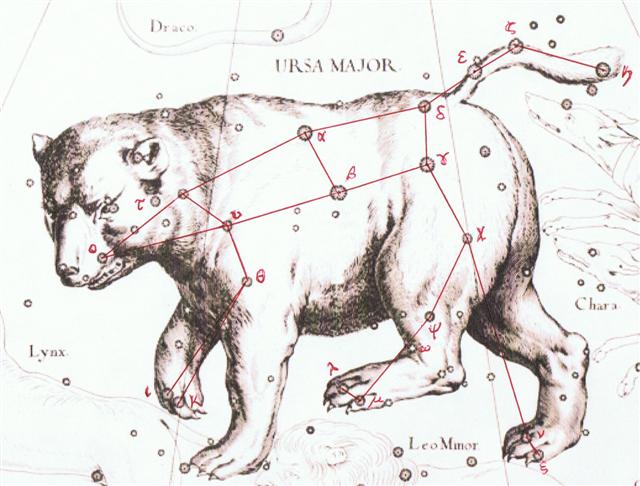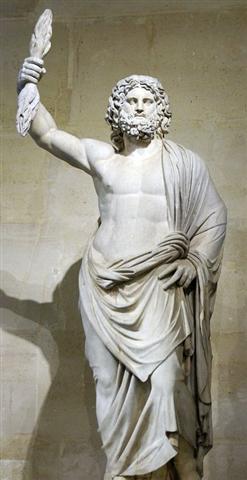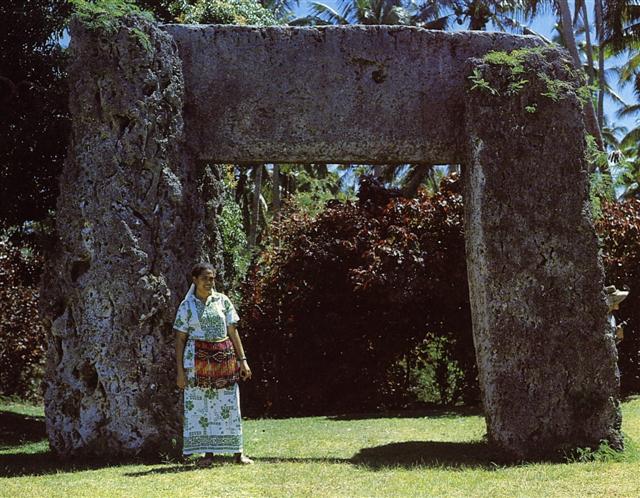| May 16 (136) |
79 |
August 4 (216) |
| Te Maro 1 (152) |
Hora Iti 20 (232) |
... The ancient names of the month were: Tua haro, Tehetu'upú, Tarahao, Vaitu nui, Vaitu poru [sic!], He Maro, He Anakena, Hora iti, Hora nui, Tagaroa uri, Ko Ruti, Ko Koró ...
|
CLOSE TO THE SUN: |
75 |
|
Nov 13 |
14 |
15 |
16 (320) |
|
'Oct 17 (290) |
18 |
19 |
20 |
 |
 |
 |
 |
|
Cb2-4 (420 = 740 - 320) |
Cb2-5 (392 + 29) |
Cb2-6 (30 = 108 - 78) |
Cb2-7 |
|
CLOSE TO THE FULL MOON: |
|
Vaitu Potu 29 (150) |
30 |
Te Maro 1 (152) |
2 |
|
Potu.
Small
stick (toothpick?);
extremity or remainder
of something. Vanaga.
End, tip.
Potupotu,
cockroach. Churchill.
The remainder (potu)
of the last half of the
double-month of
Vai-tu corresponded
to the pair ua
(rain) in Cb2-4 together
with tagata
compounded with a little digging
stick (potu) in
front.
... What
do I mean by a compound?
By compound I mean a
glyph which presumably
is not fundamental (like
an atom) but instead the
result of the blending
together of two or more
types of glyphs (like in
a chemical compound).

I believe
this example is made by
fusion between these two
types of glyph:
 
Compounds
are often difficult to
'see through', when the
glyphs partaking are
shown just by a little
sign
... |
|
May 14
δ Persei (54.7) |
15 (500 = 365 + 135)
Al Thurayya-27 (Many
Little Ones) /
Krittikā-3 (Nurses of
Kārttikeya) /
TAU-ONO (Six Stones)
ATIKS =
ο
Persei,
RANA (Frog) =
δ
Eridani
(55.1),
CELAENO (16 Tauri),
ELECTRA (17), TAYGETA
(19),
ν
Persei (55.3),
MAIA (20), ASTEROPE
(21), MEROPE (23)
(55.6) |
16 (136)
Hairy Head-18 (Cockerel)
/
Temennu-3 (Foundation
Stone)
ALCYONE
(56.1),
PLEIONE (28 Tauri),
ATLAS (27 Tauri)
(56.3) |
17
MENKHIB (Next to the
Pleiades =
ζ
Persei
(57.6)
PORRIMA (γ Virginis) |
|
'April 17 (80 + 27) |
18 (108 = 135 - 27) |
19 |
20 |
|
BISSEXTUM (54 - 55) |
56 (8 WEEKS) |
57 (= 137 - 64 - 16) |
|
... The leap day was
introduced as part of
the Julian reform. The
day following the
Terminalia (February 23)
was doubled, forming the
'bis sextum -
literally 'double
sixth', since February
24 was 'the sixth day
before the Kalends of
March' using Roman
inclusive counting
(March 1 was the 'first
day'). Although
exceptions exist, the
first day of the bis
sextum (February 24)
was usually regarded as
the intercalated or
'bissextile' day since
the third century.
February 29 came to be
regarded as the leap day
when the Roman system of
numbering days was
replaced by sequential
numbering in the late
Middle Ages ... |
| CLOSE TO THE SUN: |
| Jan 31 |
Febr 1 (32) |
2 |
3 |
4 (*320) |
350 - 29 = *321 |
| 'Jan 4 |
5 (370 = 740 / 2) |
6 |
7 |
8 |
9 |
 |
 |
 |
 |
 |
 |
| Cb5-13 (107) |
Cb5-14 (392 + 108) |
Cb5-15 (365 + 136) |
Cb5-16 (422 + 80) |
Cb5-17 (503) |
Cb5-18 (584 - 80) |
| μ Aquarii (316.0) |
ε Equulei (317.8) |
no star listed (318) |
21h (319.6)
ARMUS = η Capricorni(319.0), DORSUM = θ Capricorni (319.3), TSOO = 24 Capricorni (319.7) |
DRAMASA = σ Oct., χ Capricorni (320.0), ν Aquarii (320.3), γ Equulei (320.6), ο Pavonis (320.8) |
α Oct. (321.5), δ Equulei (321.7), φ Capricorni (321.8) |
 |
| CLOSE TO THE FULL MOON: |
| Hora Iti 17 |
18 (230) |
19 |
20 |
21 |
22 |
Aug 1
γ Pyxidis (133.6) |
2 (214 = 32 + 182)
ζ Hydrae (134.1), ρ Cancri (134.2), ζ Oct. (134.3), ο Cancri (134.6), δ Pyxidis (134.9) |
3
ACUBENS = α Cancri, TALITHA BOREALIS = ι Ursae Majoris (135.0), σ Cancri (135.2), ρ Ursa Majoris (135.6) |
4 (6 * 6 * 6)
ν Cancri (136.0), TALITHA AUSTRALIS = κ Ursae Majoris (136.1), ω Hydrae (136.8) |
5
9h (137.0)
σ¹ Ursa Majoris (137.0), κ Cancri (137.3), τ Cancri (137.4), ALSUHAIL (al Wazn, of the Weight) = λ Velorum (137.5), σ² Ursa Majoris (137.6), τ Ursa Majoris (137.7), ξ Cancri (137.8)
*96.0 = *137.4 - *41.4 |
6 (584 → Venus)
κ Pyxidis (138.0), ε Pyxidis (138.5) |
|
Hora. Ancient name of summer (toga-hora, winter summer). Vanaga. 1. In haste (horahorau). 2. Summer, April; hora nui, March; vaha hora, spring. 3. 'Hour', 'watch'. 4. Pau.: hora, salted, briny. Ta.: horahora, bitter. Mq.: hoáhoá, id. 5. Ta.: hora, Tephrosia piscatoria, to poison fish therewith. Ha.: hola, to poison fish. Churchill. Horahora, to spread, unfold, extend, to heave to; hohora, to come into leaf. P Pau.: hohora, to unfold, to unroll; horahora, to spread out, to unwrap. Mgv.: hohora, to spread out clothes as a carpet; mahora, to stretch out (from the smallest extension to the greatest), Mq.: hohoá, to display, to spread out, to unroll. Ta.: hohora, to open, to display; hora, to extend the hand in giving it. Churchill. |
| 'July 5 |
6 (*107) |
7 |
8 |
9 (190) |
10 |
| DAY 133 |
134 (= 118 + 16) |
135 |
136 |
137 |
138 |
On Easter Island the summer season (hora) may have been considered to begin when in the night of Hora Iti 20 it could be observed that the Full Moon was where Ursa Major lifted up her southern (back side) front paw, viz. in August 4 = 11 + 34 + 183 = 228 (= 364 - 136) days after the December solstice:

This was 80 nights after Alcyone had returned to visibility (in Te Maro 1).
In view of its importance we should then continue by mapping the other main events which according to Manuscript E occurred on Easter Island during these 80 days (nights). The Explorers (excepting Kuukuu who was down in his cave) went on to Papa O Pea in Hora Iti 20 and this was at the end of their 27 night long stay at Oromanga, for they had arrived to Rangi Meamea in He Anakena 23.
Cb5-16 (where 5 * 16 = 80) - 27 = 80 - 27 = 53 = 110 (Cb5-16) - 57 (Cb3-8):
| CLOSE TO THE SUN: |
| Dec 7 (*261 = 9 * 29) |
8 (342 = 366 - 24) |
9 |
10 (*264) |
| 'Nov 10 (314) |
11 |
12 |
13 |
 |
 |
 |
 |
| ko te henua - te rima |
e kava |
i haga rave ika |
ki kikiu - te henua |
| Cb3-3 (444 = 392 + 52) |
Cb3-4 (53) |
Cb3-5 |
Cb3-6 |
|
SARIN = δ Herculis (261.0), ο Ophiuchi (261.4)
*220.0 = *261.4 - *41.4
ALRISHA (α Piscium) |
ξ Ophiuchi (262.2), θ Ophiuchi, ν Serpentis, ζ, ι Apodis (262.4), ι Arae (262.8), ρ Herculis (262.9)
*221.0 = *262.4 - *41.4 |
β, γ Arae (263.3), κ Arae (263.5), σ Ophiuchi (263.6) |
LESATH (Sting) = υ Scorpii, δ Arae (264.7), CHOO (Club) = α Arae (264.9) |
| CLOSE TO THE FULL MOON: |
| June 7 ĸ Leporis (78.0), RIGEL (Foot) = β Orionis (78.1), Flaming Star = IC405 (78.2), CAPELLA = α Aurigae (78.4), ο Columbae, τ Orionis (78.8)
*37.0 = *78.4 - *41.4
THUBAN (α Draconis) |
8 (342 - 183) λ Aurigae (79.0), λ Leporis (79.6), ρ Aurigae (79.7)
ARCTURUS (α Bootis) |
9 (160) Shur-narkabti-sha-iltanu-5 (Star in the Bull towards the north)
σ Aurigae (80.4), BELLATRIX (Female Warrior) = γ Orionis, SAIF AL JABBAR (Sword of the Giant) = η Orionis (80.7), EL-NATH (The Butting One) = β Tauri (80.9) |
10 ψ Orionis (81.1), NIHAL (Thirst-slaking Camels) = β Leporis (81.7) |
| 'May 11 |
12 (132) |
13 |
14 |
| DAY 78 |
79 |
80 |
81 |
| CLOSE TO THE SUN: |
| Dec 11 |
12 (346) |
13 (LUCIA) |
| 'Nov 14 |
15 |
16 (320) |
 |
 |
 |
| ko te maro - ko te tagata |
kua hua te tagata |
ko te tagata |
| Cb3-7 (448) |
Cb3-8 (57) |
Cb3-9 |
|
Al Shaula-17
ALWAID (Mother Camels) = β Draconis, MAASYM (Wrist) = λ Herculis (265.1), SHAULA (Sting) = λ Scorpii (265.3), KUMA = ν Draconis (265.6), σ Arae (265.9)
HAMAL (α ARIETIS) |
RAS ALHAGUE = α Ophiuchi (266.1), SARGAS = θ Scorpii (266.3), μ Ophiuchi, π Arae (266.5), NAN HAE (Southern Sea) = ξ Serpentis (266.6), AL DHĪLI (The Wolf) = ω Draconis, ι Herculis (266.7) |
λ Arae (267.1), GIRTAB (Seizer) = κ Scorpii, ο Serpentis (267.6), DSIBAN (Wolf Pair) = ψ Draconis (267.9) |
| CLOSE TO THE FULL MOON: |
|
June 11
MINTAKA (Belt) = δ Orionis, υ Orionis (82.4), χ Aurigae (82.5), ε Columbae (82.6)
*41.0 = *82.4 - *41.4 |
12 (528 = 365 + 163)
Al Hak'ah-3 (Brand) / Mrigashīrsha-5 (Stag's Head) / Turtle Head-20 (Monkey) / Mas-tab-ba-tur-tur (Little Twins)
ARNEB = α Leporis, Crab Nebula = M1 Tauri (83.0, φ¹ Orionis (83.1), HEKA = λ Orionis, Orion Nebula = M42 (83.2), φ² Orionis (83.6), ALNILAM (String of Pearls) = ε Orionis (83.7) |
13 (164)
Three Stars-21 (Gibbon) / Shur-narkabti-sha-shūtū-6 (Star in the Bull towards the south) / ANA-IVA-9 (Pillar of exit)
HEAVENLY GATE = ζ Tauri, ν Columbae (84.0), ω Orionis (84.2), ALNITAK (Girdle) = ζ Orionis, PHAKT (Phaet) = α Columbae (84.7) |
| 'May 15 (365 + 135 = 500) |
16 (136) |
17 |
| DAY 82 |
83 |
84 |

... A sidelight falls upon the notions connected with the stag by Horapollo's statement concerning the Egyptian writing of 'A long space of time: A Stag's horns grow out each year. A picture of them means a long space of time.' Chairemon (hieroglyph no. 15, quoted by Tzetzes) made it shorter: 'eniautos: elaphos'. Louis Keimer, stressing the absence of stags in Egypt, pointed to the Oryx (Capra Nubiana) as the appropriate 'ersatz', whose head was, indeed, used for writing the word rnp = year, eventually in 'the Lord of the Year', a well-known title of Ptah. Rare as this modus of writing the word seems to have been - the Wörterbuch der Aegyptischen Sprache (eds. Erman and Grapow), vol. 2, pp. 429-33, does not even mention this variant - it is worth considering (as in every subject dealt with by Keimer), the more so as Chairemon continues his list by offering as number 16: 'eniautos: phoinix', i.e., a different span of time, the much-discussed 'Phoenix-period' (ca. 500 years) ...
However, He Anakena 23 ought to correspond to the heliacal stars of July 7:
| May 16 (136) |
51 |
July 7 (188 = 204 - 16) |
27 |
August 4 (216) |
| Te Maro 1 (152) |
He Anakena 23 (204) |
Hora Iti 20 (232) |
| CLOSE TO THE SUN: |
| Dec 29 |
30 |
31 (365 = 182 + 183) |
Jan 1 |
2 |
| 'Dec 2 |
3 |
4 |
5 |
6 (340) |
 |
 |
 |
 |
 |
| Cb4-3 |
Cb4-4 (75) |
Cb4-5 (468 = 392 + 76) |
Cb4-6 (420 + 49) |
Cb4-7 |
| CLOSE TO THE FULL MOON: |
| June 29
ψ4 Aurigae (100.5), MEBSUTA (Outstretched) = ε Gemini (100.7) |
30
SIRIUS = α Canis Majoris (101.2), ψ5 Aurigae (101.4), ν Gemini (101.6), ψ6 Aurigae (101.7)
*60.0 = *101.4 - *41.4 |
July 1 (182)
τ Puppis (102.2), ψ7 Aurigae (102.4)
*61.0 = *102.4 - *41.4 |
2
Mash-mashu-sha-Risū-9 (Twins of the Shepherd)
θ Gemini (103.0), ψ8 Aurigae (103.2), ALHENA = γ Gemini (103.8), ψ9 Aurigae (103.9) |
3
ADARA (Virgins) = ε Canis Majoris (104.8) |
| 'June 2 |
3 |
4 |
5 |
6 (157) |
| CLOSE TO THE SUN: |
| Jan 3 |
4 |
5 (370) |
6 |
7 |
| 'Dec 7 |
8 |
9 |
10 |
11 (345) |
 |
 |
 |
 |
 |
| manu mau kai - rere ki te kai - ka kake ki te kai - hakavari te gao o te manu - * * "ausgestrichen: manu rere ki te hau tea" |
kiore henua |
| Cb4-8 (392 + 79 = 471) |
Cb4-9 (80) |
Cb4-10 (420 + 53) |
Cb4-11 |
Cb4-12 |
|
Al Na'ām-18 (Ostriches) / Uttara Ashadha-21 (Elephant tusk, small bed)
NUNKI = σ Sagittarii (288.4), ζ Cor. Austr. (288.5), MANUBRIUM = ο Sagittarii (288.8), ζ Aquilae (288.9)
*247.0 = *288.4 - *41.4 |
19h (289.2)
λ Aquilae (Ant.) (289.1), γ Cor. Austr (289.3), τ Sagittarii (289.4), ι Lyrae (289.5), δ Cor. Austr. (289.8)*248.0 = *289.4 - *41.4 |
Al Baldah-19 (City)
AL BALDAH = π Sagittarii, ALPHEKKA (Dish) MERIDIANA = α Cor. Austr. (290.1), β Cor. Austr. (290.2) |
ALADFAR = η Lyrae (291.1), NODUS II = δ Draconis (291.5), ψ Sagittarii (291.6), τ Draconis (291.7), θ Lyrae (291.8) |
ω Aquilae (292.1), ρ Sagittarii (292.6), υ Sagittarii (292.7) |
| CLOSE TO THE FULL MOON: |
| July 4 (185) ω Gemini (105.4), ALZIRR (Button) = ξ Gemini (105.7), MULIPHEIN (Oaths) = γ Canis Majoris (105.8), MEKBUDA (Contracted) = ζ Gemini (105.9)
*64.0 = *105.4 - *41.4 |
5 7h (106.5)
no star listed (106) |
6 WEZEN (Weight) = δ Canis Majoris (107.1), τ Gemini (107.7), δ Monocerotis (107.9) |
HE ANAKENA 23 7 (365 + 188 = 553)
no star listed (108) |
8 λ Gemini (109.4), WASAT (Middle) = δ Gemini (109.8)
*68.0 = *109.4 - *41.4 |
| 'June 7 |
8 |
9 (525 = 365 + 160) |
10 (161) |
11 |
We can compare with
the Roman month of Jus Piter:

... The month, which takes its name from Juppiter the oak-god, begins on June 10th
[161] and ends of July 7th [188 =
161 + 27]. Midway comes St. John's Day, June 24th, the day on which the oak-king was sacrificially burned alive. The Celtic year was divided into two halves with the second half beginning in July, apparently after a seven-day wake, or funeral feast, in the oak-king's honour ...
|
'June 10 (161) |
'June 11 |
12 |
'June 24 (175) |
12 |
'July 7 (188) |
|
26 |
He Anakena 23 suggests this was the day after 22-7 (→ π), the day following that when the Sun reached π Sagittarii.

|


























